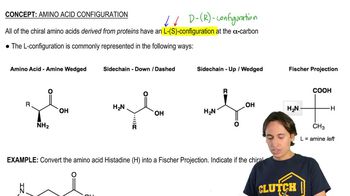Multiple Choice
How many secondary carbon atoms are in the following molecule?
 Verified step by step guidance
Verified step by step guidance Verified video answer for a similar problem:
Verified video answer for a similar problem:



 1:49m
1:49mMaster Why we need functional groups. with a bite sized video explanation from Johnny
Start learning